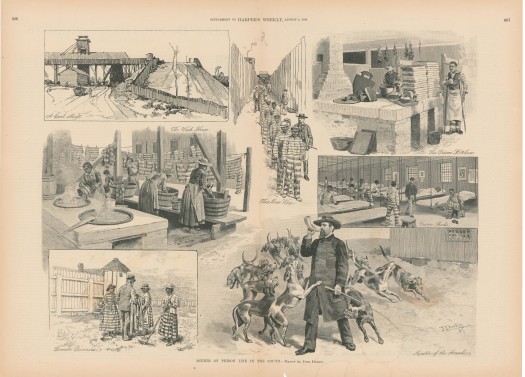Life in Southern Prisons in late 19th Century
One of the recent additions to my prison artifact collection is an article by Isabel C. Barrows published in Harper’s Weekly in 1890. I was struck by the illustration that accompanies the article.
The following quote gives you a sense of the tone and tenor of the article:
“During the days of slavery there was comparatively little crime. The easy-go-luck nature of the uneducated and poorer whites was not ambitious enough to be criminal. The better educated were too well-bred to stoop to criminal life; and for the colored criminals the masters acted as court, judge, jury, and executioner. There was no well-developed ideas of meum and tuum in the negro’s brain, and if he sometimes inverted the possessive adjectives he met his punishment in the stroke of the overseer’s lash. If he were guilty of murder he might have to forfeit his life, and the State — some of them, at least — made good his loss to his master from the public treasury. Here and there a calaboose, and now and then a jail, comprised the chief provisions for criminals under the law, and State penitentiaries were almost unknown. […] Suddenly this stricken land finds six millions of people thrown upon it, of whom hundreds and thousands are soon culprits under the law. What should be done with them, without buildings to receive and house them? The States were at first almost palsied by the situation. When the proposition came to lease the convict labor it was regarded as the best and wisest thing under the circumstances.”
The article continues by pointing out the horrors of the convict lease system and recounting a visit that the author made to a convict camp.

